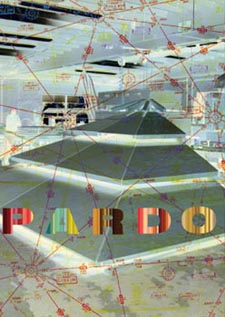
K21 Kunstsammlung Nordrhein-Westfalen
Jorge Pardo
April 4th - August 2nd 2009
K20K21 Kunstsammlung Nordrhein-Westfalen
Ständehausstraße 1
40217 Düsseldorf
Germany
http://www.kunstsammlung.de
The exhibition is being organized in close collaboration with the artist. The core of the pres-entation is formed by three new pavilions designed by Pardo and his team, structures based on an architectural type found frequently in the tropics, the so-called "palapa". Open at the sides, the roofs traditionally covered in palm leaves, these huts provide shelter from the sun while serving as gathering places. In Pardo's exhibition, these accessible palapas serve as display cases and cabinets. While the outer boundaries consist of airy curtains, a central in-terior space is formed by ornamentally perforated wooden walls. Containing objects drawn from three different working phases of this artist's career, the palapas thematize conceal-ment and disclosure, a synthesis of function and presentation that is emblematic of Jorge Pardo's artistic intentions.
During his studies in the 1980s at the Art Center of Design in Pasadena/California, Pardo became one of the first artists of his generation to exploit the computer in his creative production. Pardo's pieces are produced in a workshop that is organized like a manufacturing unit, where he collaborates with artistic assistants, experienced craft experts, and architects. In the Jorge Pardo Sculpture Studio in Los Angeles, craft techniques are combined in a singular way with digitally-guided production. The objects, pictures, and forms created there suspend the boundaries distinguishing design, architecture, sculpture, and painting from one another, effacing the line between autonomous and applied art while es-tablishing unexpected links between the various media.
In formal terms, Pardo's work is strongly indebted to the vocabulary of Classical Modernism (from Hans Arp to Henry Moore) and to design history (from Charles Eames to Verner Pan-ton). Influences derived from Conceptual Art and from practices of institutional critique (from Daniel Buren to Michael Asher and Heimo Zobernig) also play a vital role. Pardo refers to himself as a sculptor, and his field of activity is the space within which the viewer moves. His oeuvre's most conspicuous feature is the seductiveness of its extraordinary coloristic splen-dor and formal variety. But standing behind these effects is an artistic approach that brings together art and life in order to radically interrogate the forms and functions of design and decor with regard to their contemporary societal significance.
Oval spots in pale green, yellow, and orange bubble across the reddish-brown walls and onto the ceiling, while a band of light composed of green and blue blades bisects and accen-tuates the tall room. The Bar am Kaiserteich in the K21, designed by Jorge Pardo in 2002, is a much-favored Düsseldorf meeting place. The K21 Kunstsammlung Nordrhein-Westfalen is the first European museum to devote a solo exhibition to this Cuban-American artist. En-compassing approximately 80 objects, paintings, and sculptures, it provides an overview of Pardo's production over the past 15 years. At the center of interest are Pardo's virtuosic de-signs of surfaces, which take the form of pictures, wall objects, and relieves, all of them of-fering a profusion of opulent and sensuous impressions.
Jorge Pardo, born in 1963 in Havana/Cuba, lives and works in Los Angeles.
A wide-ranging program accompanies the exhibition, and includes lectures, discussions, seminars, and workshops as well as excursions to the Düsseldorfer Stadtwerken (Düsseldorf Municipal Utilities), whose historic turbine hall has been decorated by Jorge Pardo with enormous murals and a floor mosaic. Excursions are scheduled for April 25, May 9, and June 20, 2009.